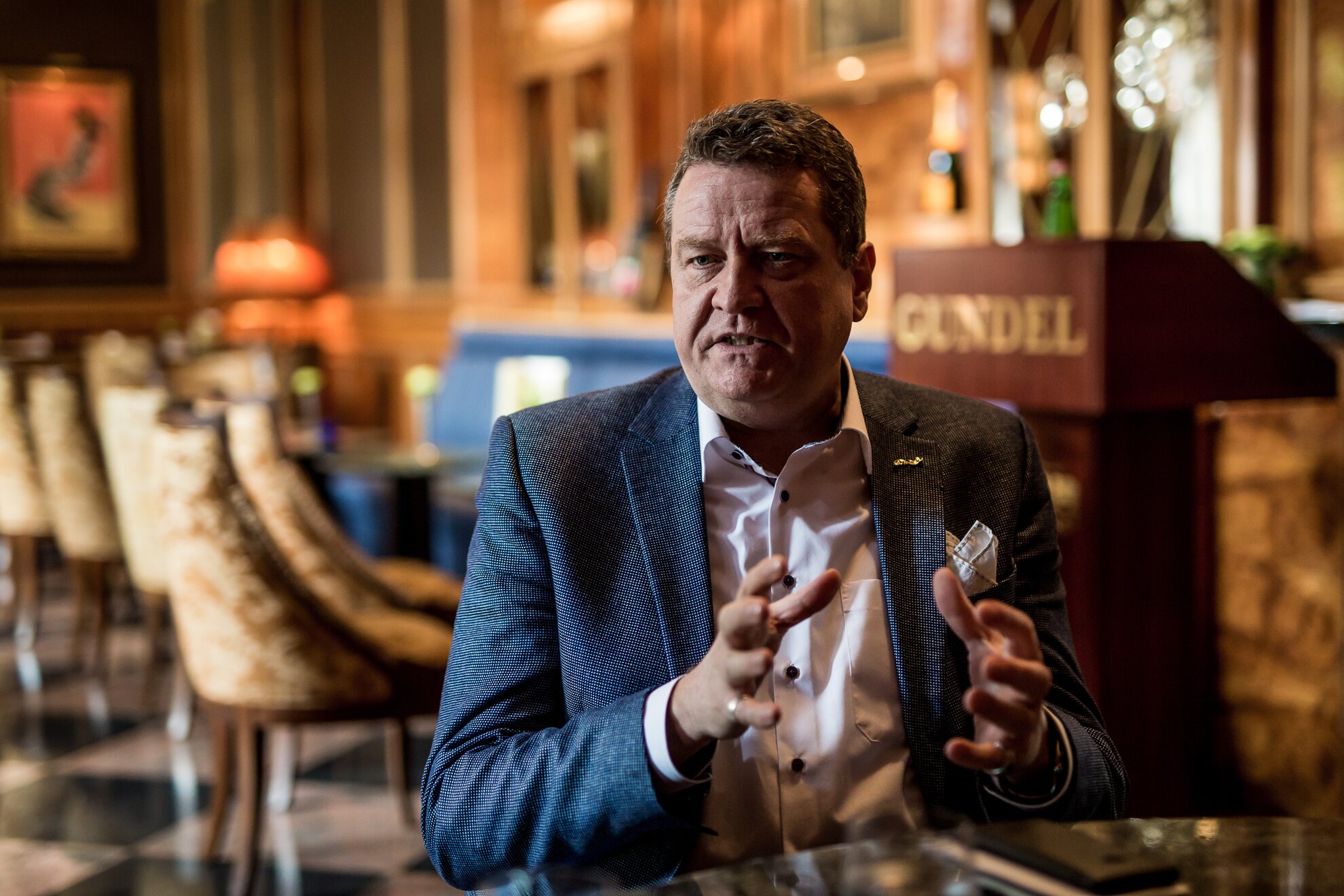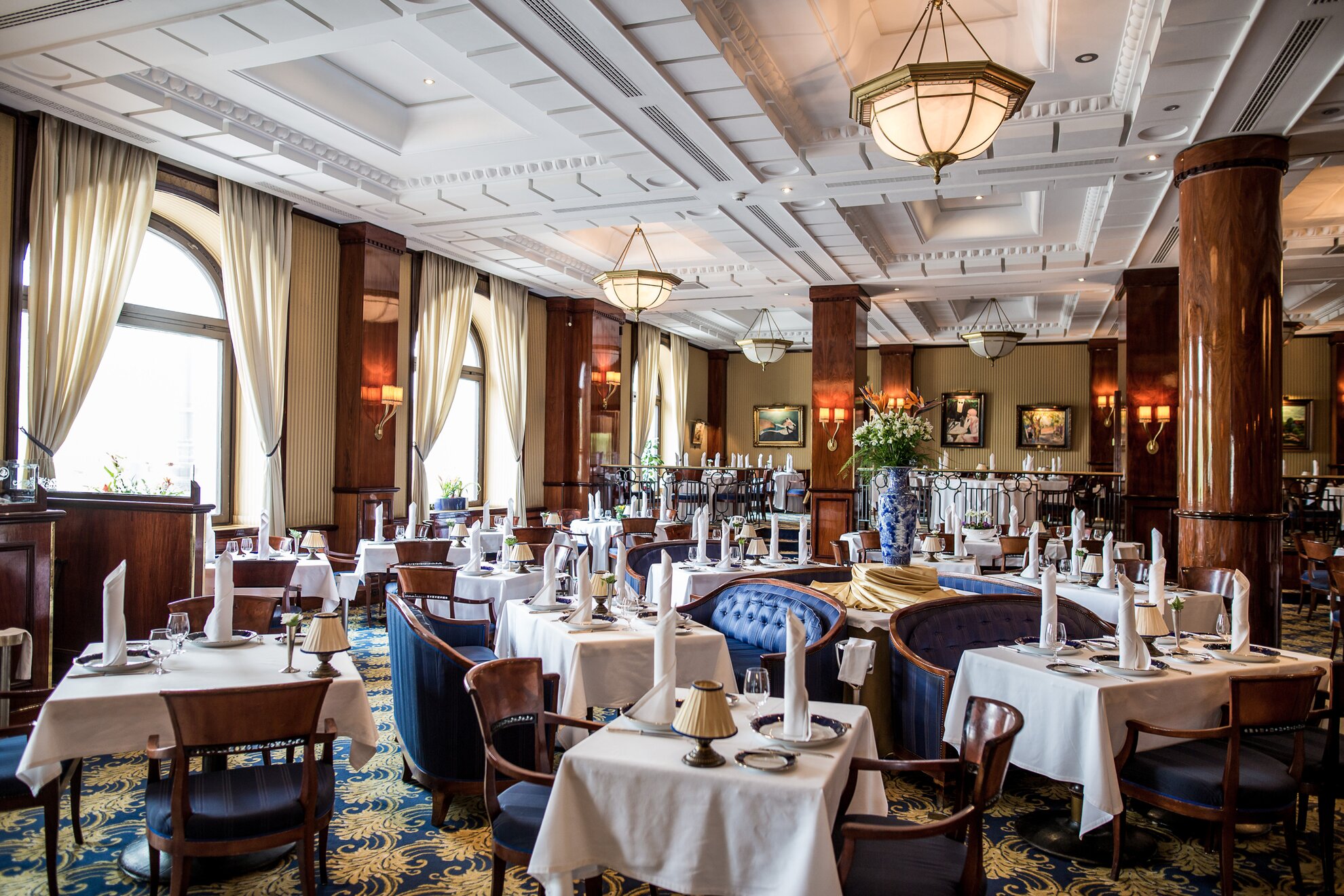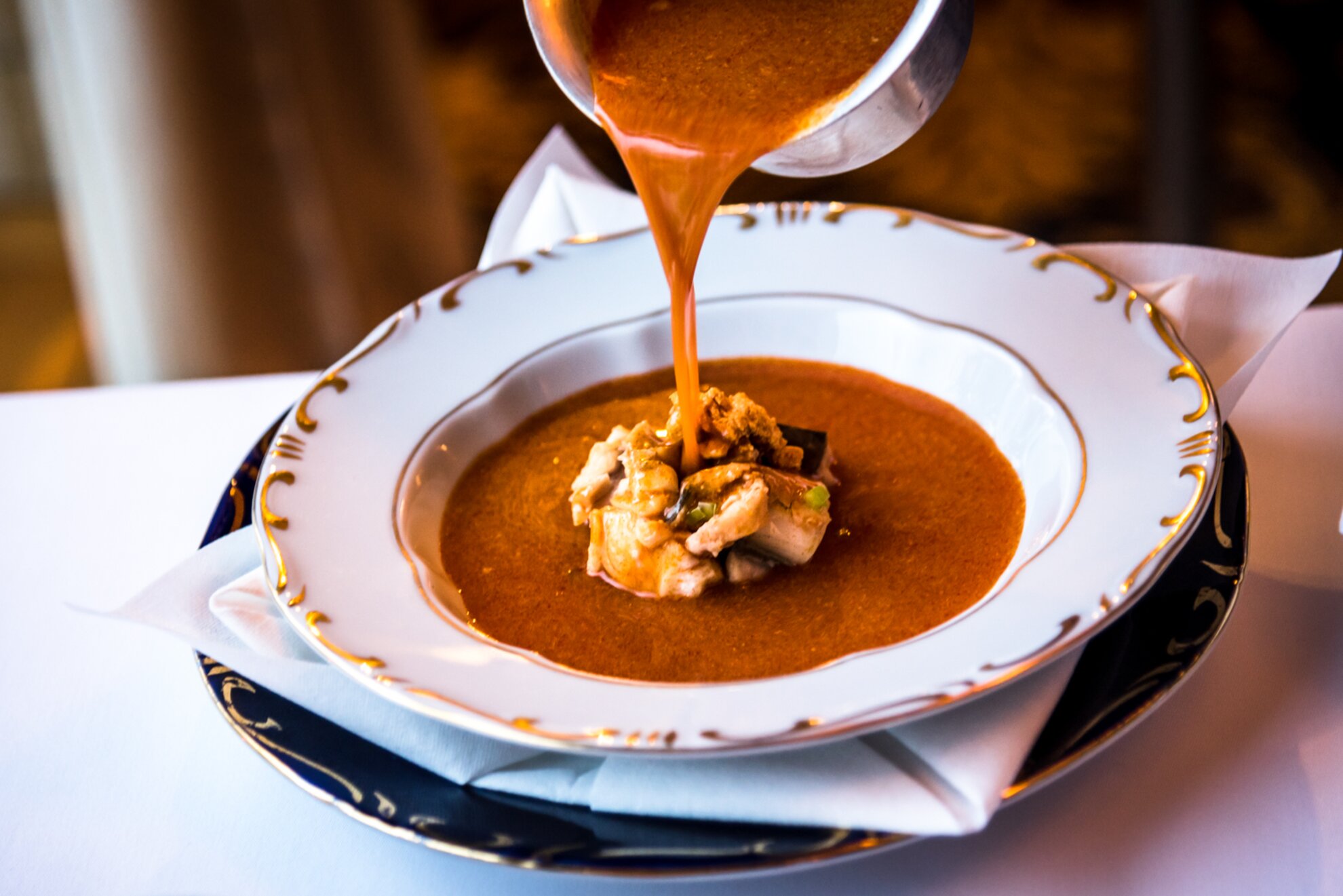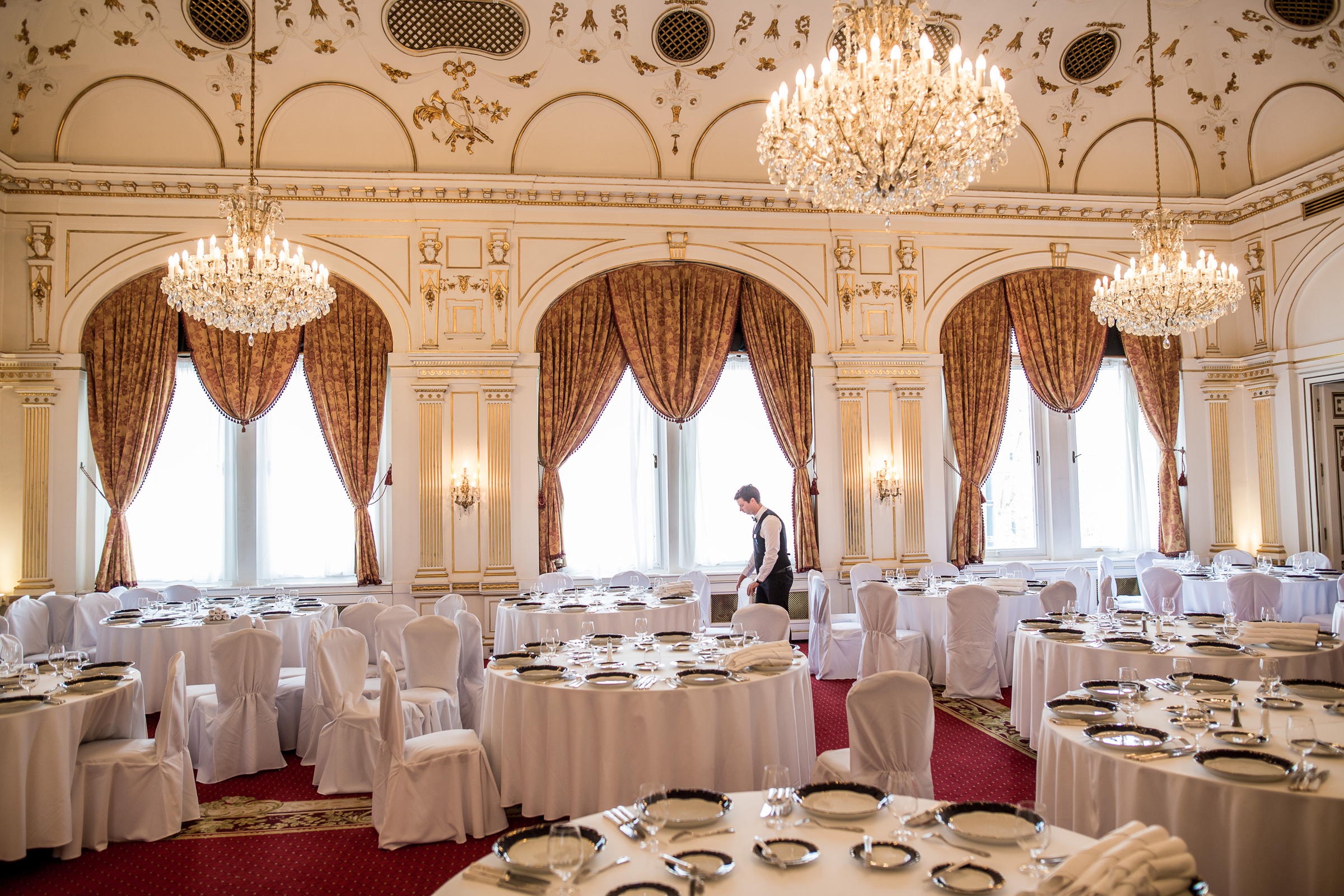“It’s a great opportunity to take Gundel to the next level of hospitality and gastronomy,” begins incoming German director Peter Knoll. “Gundel is famous for its traditional Hungarian service and food. Combining tradition, innovation and evolution is one of our main tasks right now. We still would like to be considered as the famous Gundel restaurant, but at the same time being a modern eatery, which caters for the market of Budapest’s fine-dining restaurants,” he adds, referring to the four Michelin-starred eateries the city currently features.

It was at És Bistro within the Kempinski Hotel Corvinus that Knoll first met seasoned chef Zsolt Litauszki. The duo soon realised that they shared the same aim: improve the local gastronomy scene by adding modern-day elements to Gundel’s renowned heritage services.
And what a heritage it is. Founded in 1910 by Károly Gundel, son of Bavarian-born restaurateur Johann, this City Park landmark helped place Hungary on the world gastronomy map. Here behind monumental Heroes’ Square, near the iconic Széchenyi Baths and fairy-tale Vajdahunyad Castle, historically linked with Hungary’s 1896 millennial celebrations, the legendary Gundel offers a fine-dining experience like no other.

Thanks to the family’s culinary legacy and Károly’s creative fusion of Magyar cuisine with international influences, Gundel hospitality has been attracting guests from around the globe to dine amid its palatial setting. Queen Elizabeth II, George Bush Sr, Angelina Jolie and Brad Pitt have all been served here.

And the restaurant really goes to town when it comes to high-level hospitality. The gilded interior of the Gundel is imbued with neo-Baroque elements across several halls, where customers are treated to black truffle goose liver pâté and classic walnut crêpe à la Gundel, all served on elegant porcelain plates produced by the famed Zsolnay factory in Pécs. For dinner, a live band entertains guests with virtuoso tunes.

“Our aim is to create a new era for the Gundel and to make it the centre of gastronomy in Budapest again,” outlines Knoll. “It won’t happen overnight, but our plan is to have a revamped atmosphere by 2020. We have a great team in place and Zsolt and I have the same vision for the future of Gundel. For mid-summer, we are coming up with a new menu, and we we would like to redesign our café and garden, as well.”

These changes might affect the restaurant’s popular Sunday-brunch buffet, currently offered for 9,800 forints, a moderate sum for a taste of the Gundel experience. “Our present brunch concept might fade out as it doesn’t represent what we would like to portray of the restaurant,” explains the director.

Giving a facelift to such a heritage hangout as Gundel is a testing endeavour, but the new team with Litauszki is ready to take the challenge. With a background at top restaurants in Hungary and abroad, the executive chef is ready to take the Gundel gastronomy into his own hands. “I spent a year in Costa Rica, a melting pot of different cultures and cuisines from Mexican to Guatemalan and Peruvian,” says Litauszki. “I saw a world out there that’s incredibly rich and very exciting in every way.”

Before Central America, Litauszki had spent a decade in Austria. With much of his career working at deluxe hotel chains, when the experienced chef eventually returned to Budapest, he was immediately snapped up by the local Zsidai Group to be involved in its gastronomy projects – including És Bistro at the Kempinski.
“I’m committed to add my expertise to this new venture at the Gundel,” says Litauszki. “History is very important. Soon after Károly Gundel took over the place, he merged tradition and evolution under one roof. That’s what we are planning to bring back here.”

“For the current menu, there are buzzwords we have to keep in mind, but we need to fill the dishes with new content. Food at the Gundel should incorporate the gastronomic heritage of Hungary, the Carpathian Basin and the old Monarchy. I want to source seasonal ingredients from local farmers and recreate some of the old Gundel favourites by using 21st-century technology.”

These enthusiastic plans make it obvious that Litauszki has his heart set on his new role. “Before I started working in gastronomy,” he says, “I wanted to become a historian, so I really enjoy pursuing research for this new undertaking”.
With this twist in concept, the iconic eatery would like to welcome new customers, while staying attractive to their long-established circle of guests. Budapest’s current tourist boom is another element. “From Thursday to Sunday, Budapest is bustling with visitors who come here for the city’s party scene. They usually don’t spend more than €10 per meal, often street food. A niche segment of visitors represents quality tourism –and that’s what the city needs,” explains Litauszki.

“Due to the size of the restaurant, our work won’t have immediate effect. We have to be gentle with the changes and stay productive at the same time. I’ve come to Gundel to stay.”
Its heritage setting, as Peter Knoll concludes, may also have a hidden advantage. “I think people underestimate the City Park. If you look at the ongoing redevelopment here, the renovation of the Museum of Fine Arts, the proposed new Pannonia Park and biodome, even the mooted pedestrianisation of the area between the Széchenyi Baths and the Zoo, I think that this will be where more and more people will come to relax, in summer as well as winter. We have a prime location.”




